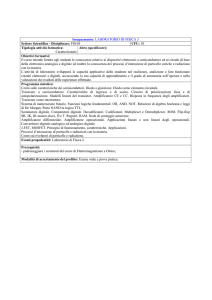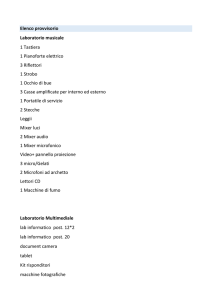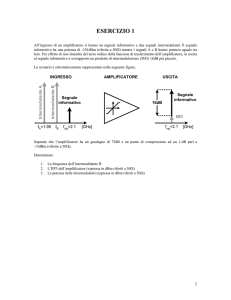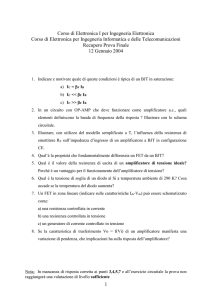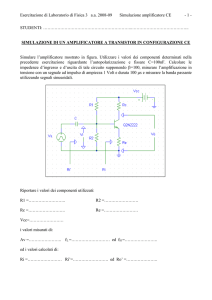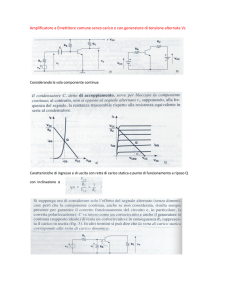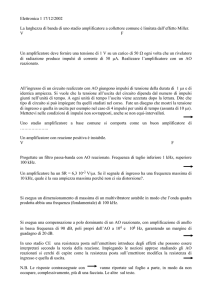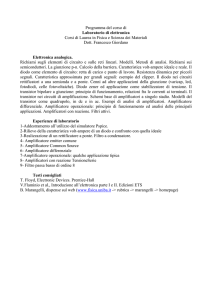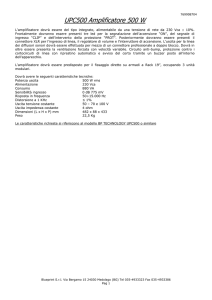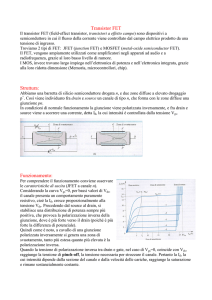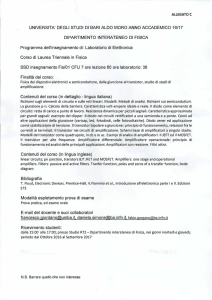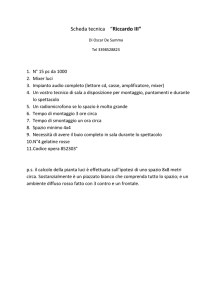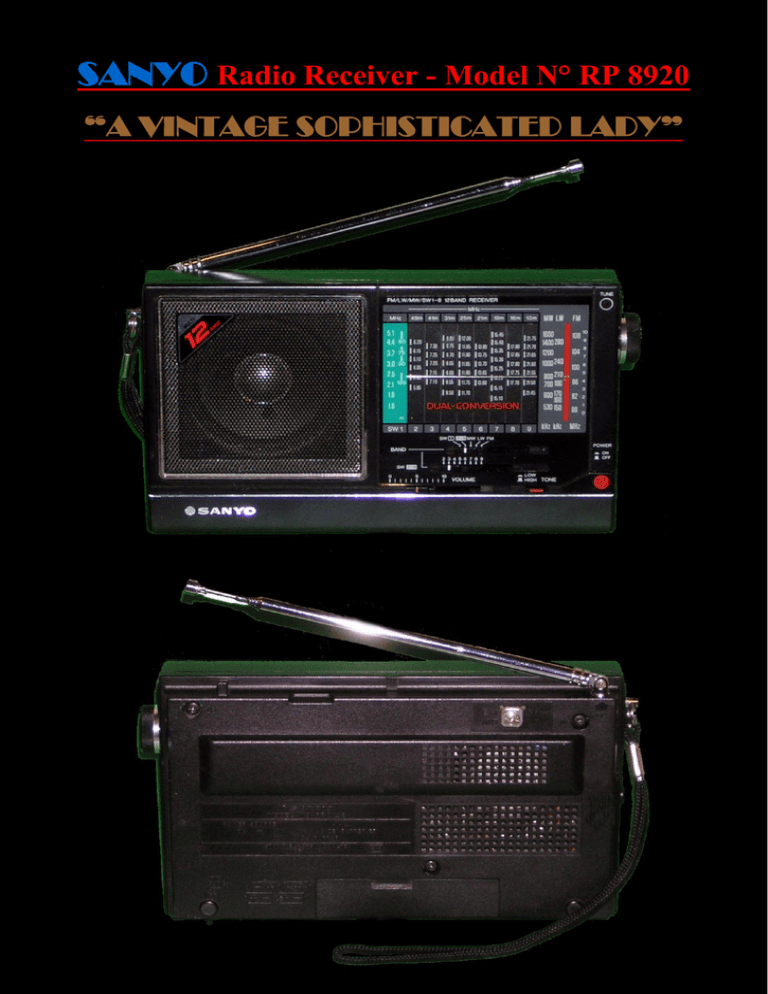
wwwdiopharos.it
SANYO Radio Receiver - Model N° RP 8920
“A VINTAGE SOPHISTICATED LADY”
L'RP8920 si presenta come tante altre piccole radio analogiche multi banda;
OL / OM/ VHF-FM e 9 bande OC, un quadrante con indice scorrevole orizzontale,
un cambio gamma a cursore, un interruttore per il tono, un jack per un alimentazione
esterna, ecc., ecc. Ma cercando più in dettaglio nelle sue caratteristiche notiamo che
l'RP8920 utilizza una configurazione a doppia conversione su otto delle gamme ad
onde corte e una sbirciatina allo schema elettrico rivela una prima conversione
controllata a quarzo! Questo schema mostra un circuito piuttosto raffinato per una
radio così piccola! La sezione VHF-FM adopera un circuito integrato, di tipo
TA7358, come amplificatore RF, Mixer e OL. Un integrato HA12413 svolge le
funzioni di amplificatore MF a 10,7 MHz, limitatore, rivelatore di quadratura FM e
come driver per l’S Meter. Questo stesso IC funge anche da amplificatore a 460 kHz
(con AGC) e come rivelatore in AM per le bande OL / OM e OC1 -- OC9. Un FET è
usato come amplificatore RF per le bande OL / OM e OC1, un altro FET svolge la
funzione di miscelazione del segnale RF con quello dell’oscillatore locale variabile
generato da un transistore al Silicio “bufferato” con un altro transistore Si. Le gamme
OC2—OC9 hanno un circuito a sé che merita un discorso a parte. Ho disegnato uno
schema a blocchi che permetterà una migliore comprensione. Ho anche preparato una
tabella (Table 1) dove sono presenti tutte le interazioni di frequenza per tali bande.
Un FET e un transistore Si sono impiegati in coppia come stadio amplificatore a RF
semi aperiodico il cui guadagno è controllato dalla tensione AGC (generata
nell’amplificatore MF) tramite un transistor. L'amplificatore RF pilota un mixer a
FET i cui prodotti, creati dal battimento con l’oscillatore locale a cristalli (2
transistori Si), vengono filtrati da un trasformatore di media frequenza unito ad un
filtro ceramico. I segnali in uscita sono inviati in un altro mixer a FET e selezionati
da un VFO con transistor al silicio. Il segnale a 460 kHz all'uscita del mixer è filtrato
da un trasformatore di MF e un doppio filtro ceramico e quindi inviato all’ingresso
AM IF del circuito integrato HA12413. L'uscita rivelata in AM è poi inviata
all'amplificatore audio, un terzo circuito integrato, tipo LA4145. Questo IC è
utilizzato anche in tutte le altre gamme. L’uscita in CC per l’S Meter, dall’HA12413,
pilota due transistor che a loro volta pilotano un LED come indicatore di sintonia. La
radio è alimentata da quattro celle a 1, 5 volt o da una alimentazione esterna a 6 volt
in corrente continua. Le prestazioni del RP8920 sono abbastanza buone, ma un
trimmer (condensatore variabile) in parallelo alle bobine (per le otto gamme a onde
corte) dell’amplificatore RF migliorerebbe la selettività e la sensibilità. La ricezione
di segnali radioamatoriali in SSB sarebbe possibile sostituendo un paio di cristalli nel
primo OL (la gamma dei 40M è già disponibile in OC3) e aggiungendo un BFO con
un rivelatore di prodotto,.......spazio permettendo!
The RP8920 looks like so many other small analogue multiband radios;
LW/MW/VHF-FM and 9 SW bands, a sliding horizontal dial pointer, a slider band
switch, a tone switch, a jack for an external power supply, etc., etc. But going in
more detail in its features we note that the RP8920 uses a double conversion scheme
on eight of the shortwave bands and a peek at the electrical diagram reveals a crystal
controlled first conversion! This diagram shows a rather sophisticated circuit for
such a small radio! The VHF-FM section uses an integrated circuit, type TA7358, as
a RF amp, Mixer and LO. An HA12413 IC performs the functions of 10,7MHz IF
amplifier, limiter, FM quadrature detector and as an S Meter driver. This same IC
acts also as a 460 kHz IF amplifier (with AGC) and as an AM detector for the
LW/MW and SW1—SW9 bands. A FET is used as a RF amplifier for the LW/MW and
the SW1 bands; another FET performs the function of mixing the RF signal with that
of the variable local oscillator signal generated by a Silicon transistor buffered with
another Si transistor. The SW2—SW9 bands have their own circuit and deserves a
separate discussion in itself. I drew a block diagram that will allow understanding
better. I also prepared a table (Table 1) where all frequencies interactions for those
bands are shown. A FET combined with a Si transistor are used as a semi-aperiodic
RF amplifier stage whose gain is controlled by the AGC voltage (generated in the IF
amplifier) through a transistor. The RF amplifier drives a FET mixer whose
products, created from the beating with the crystal local oscillator (2 Si transistors),
are filtered by an intermediate frequency transformer joined to a ceramic filter.
Signals at the output are sent to another FET mixer and selected by a silicon
transistor VFO. The 460 kHz signal from the mixer output is picked up in an IF
transformer and a double ceramic filter and then sent to the AM IF input of the
HA12413 IC. The AM detected output is sent to the audio amplifier, a third IC, type
LA4145. This IC is also used in all the other bands. The S Meter DC output from the
HA12413 drives two transistors which in turn drive a LED as a tuning indicator. The
radio is powered by four 1,5 volts cells or by an external 6 volts DC power supply.
Performances of the RP8920 are quite good but a trimmer (variable capacitor) in the
coils (for the eight shortwave double conversion bands) of the RF amplifier will
improve the selectivity and the sensitivity. Reception of SSB amateur signals could be
possible by changing a couple of crystals in the first LO (40M band is already
available in SW3) and by adding a BFO with a product detector,…….space
permitting!
EXT. ANT.
RF AMPLIFIER
L101
Q104
Q105
1st
MIXER
Q107
1st
CONVERSION
FILTER
T303
CF303
2nd 460 kHz Filter
MIXER
T304
CF304
Q302
IF AMPLIFIER
IC301
IF
IN
AM
OUT
AGC
OUT
D106
D105
AUDIO
AMPLIFIER
Q106
RF AGC
Q109
BUFFER
Q108
XTAL
OSC.
Q110
VFO
Q305
IC101
L112
L119
VC5
Q306
L111
6 V. DC
X101
D301
TUNING
INDICATOR
X108
JACK
EARPHONE
POWER SWITCH
D701
S4
EXT. DC
6 VOLTS
FILTER and
STABILIZER
JACK
6 V. BATTERY
(4x1,5 V.CELLS)
NOTE: FOR CLARITY SWITCHINGS FOR
THE LW, MW, SW1 AND THE VHF-FM
BANDS ARE NOT SHOWN.
SANYO RP 8920
SW2—SW9 ONLY
BLOCK DIAGRAM
SPECIFICATIONS
FREQUENCY RANGE
LW
MW
SW1
SW2 -- SW9
VHF/FM
150 – 285 kHz
525 – 1605 kHz
1,6 – 5,1 MHz
49, 41, 31, 25, 22, 19, 16, 13 Meter Band
87,5 – 108 MHz
INTERMEDIATE FREQUENCIES
AM
10,935 – 10,465 MHz*, 460 kHz
FM
10,7 MHz
AUDIO
POWER
0,6 Watt
FET
5
Si TRANSISTOR 12
IC
3
DIODE
11
POWER SOURCE
4 x 1,5 V CELLS or EXTERNAL 6 VOLTS DC P.SUPPLY
DIMENSIONS
175 (W) x 107 (H) x 32 (D) mm.
WEIGHT
520 g. (INCLUDING BATTERIES)
PRODUCTION YEARS
SECOND HALF OF THE 80’s
* ONLY FOR SW2—SW9
Bands SW 2—SW 9 Frequencies Tabulation
BAND
SW 2
SW 3
SW 4
SW 5
SW 6
SW 7
SW 8
SW 9
1st LO
1st IF
2nd LO
2nd IF
(MHz)
XTAL
(MHz)
VARIABLE
(MHz)
VARIABLE
(MHz)
FIXED
(kHz)
5.840—6.310
16.775
10.935—10.465 10.475—10.005
460
6.965—7.435
17.900
10.935—10.465 10.475—10.005
460
9.415—9.885
20.300
10.935—10.465 10.475—10.005
460
11.565—12.035
22.500
10.935—10.465 10.475—10.005
460
13.465—13.935
24.400
10.935—10.465 10.475—10.005
460
15.040—15.510
25.975
10.935—10.465 10.475—10.005
460
17.565—18.035
28.500
10.935—10.465 10.475—10.005
460
21.365—21.835
32.300
10.935—10.465 10.475—10.005
460
RF
TABLE 1
SCHEMATIC DIAGRAM
by Vincent Italia
COPYRIGHTED
December 2012
www.radiopharos.it

